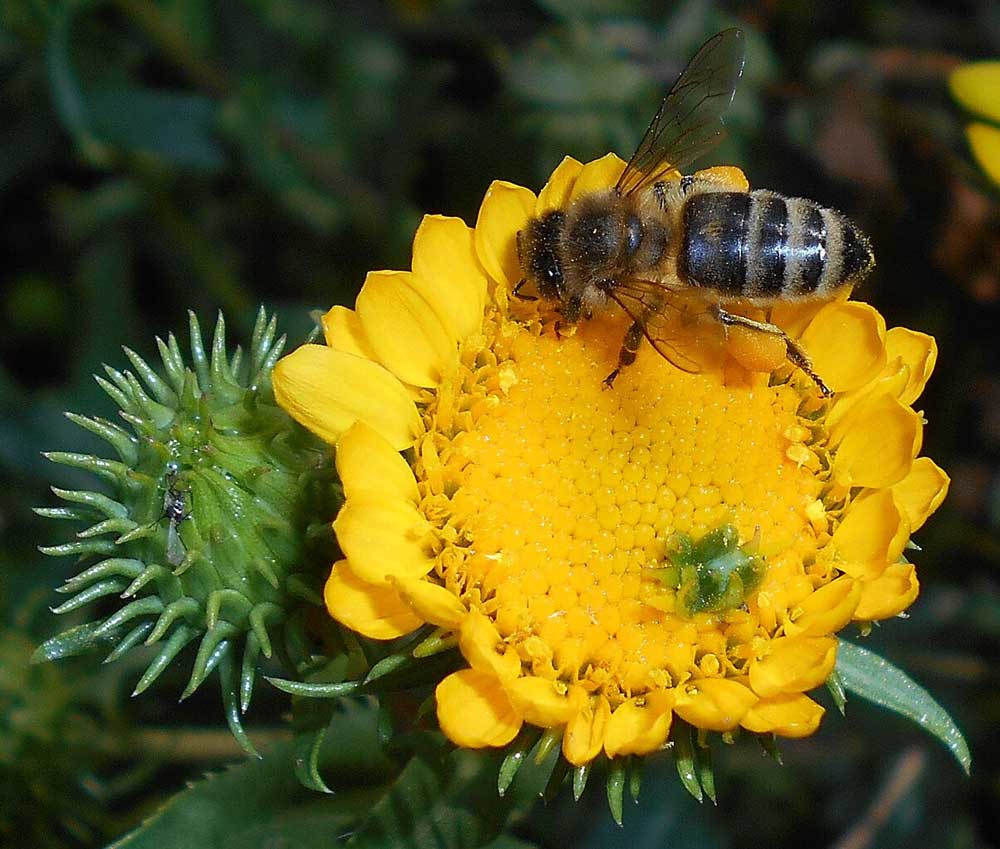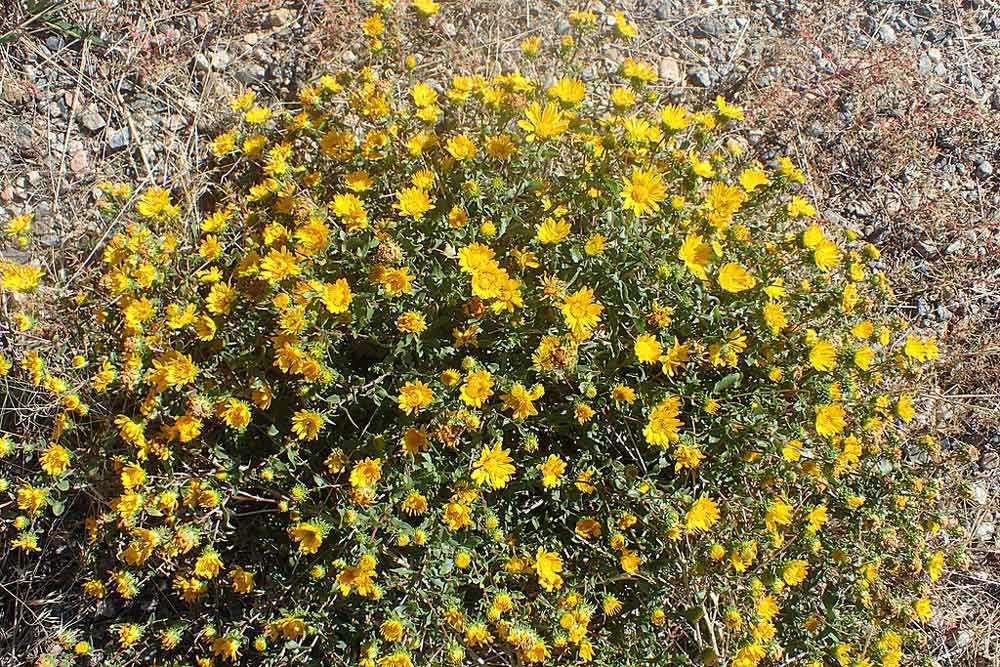A Keystone of Resilience
Grindelia squarrosa, known as curlycup gumweed, is a biennial or short-lived perennial native to North America. Its distinctive sticky resin and bright yellow flowers make it a visually appealing addition to native plant gardens. A resilient addition to gardens, Grindelia squarrosa thrives in dry conditions with sticky resin-covered stems and yellow blooms attracting native pollinators. It supports at least 15 caterpillar species and 75 pollen specialist bee species, making it a keystone plant.

Gardening Uses and Benefits
Gardeners can benefit from Grindelia squarrosa‘s drought tolerance and ability to grow in poor soils, making it ideal for xeriscaping. Its flowers attract a variety of pollinators, enhancing garden biodiversity.
Planting Instructions
- Site Selection: Choose a location with full sun exposure and well-drained soil. Curlycup gumweed is adaptable to various soil types, including sandy loam, loam, and clayey loam, and can tolerate saline conditions.
- Soil Preparation: Ensure the soil is free from competing vegetation. This plant often forms pure stands in disturbed sites with minimal competition.
- Seeding: Sow seeds directly into the soil in early spring. The seeds exhibit polymorphic germination, meaning they can germinate at different times, which can be advantageous for staggered growth.
- Watering: Although drought-tolerant, water the seeds lightly until they are established. Once mature, the plant requires minimal watering.

Nurturing Tips
Fertilization: Generally not required due to its ability to thrive in poor soils. However, if desired, a light application of balanced fertilizer can be used to support growth in nutrient-deficient soils.
Pest Control: Curlycup gumweed is not typically affected by pests due to its resinous coating. However, maintain good garden hygiene to prevent potential issues.
Interesting Facts about the Curlycup Gumweed
- The plant’s resinous nature gives it the name “gumweed” and is used traditionally for respiratory ailments.
- It is being researched as a potential biofuel source due to its high terpene content.
- Grindelia squarrosa is a keystone plant, supporting at least 15 caterpillar species and 75 pollen specialist bee species.

Ecosystem Contributions
This plant significantly contributes to ecosystem health by stabilizing soils and providing resources for diverse wildlife. Its ability to concentrate selenium can aid in phytoremediation projects, though care must be taken due to potential toxicity.
Grindelia squarrosa is invaluable in biodiversity-friendly gardens due to its ecological roles, resilience, and support for native wildlife. Its medicinal properties and potential as a biofuel source further enhance its utility.
